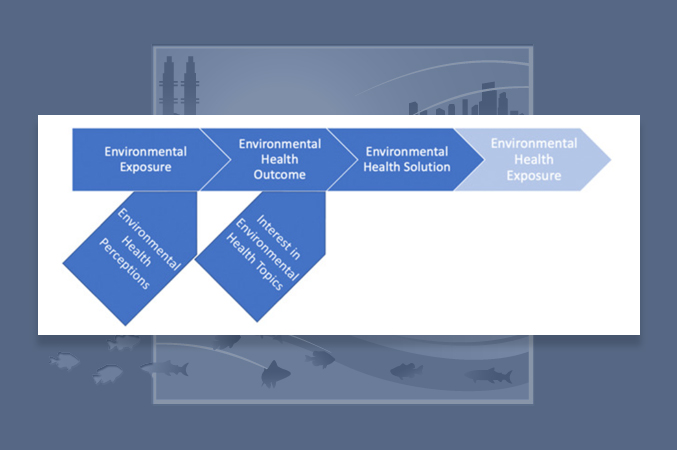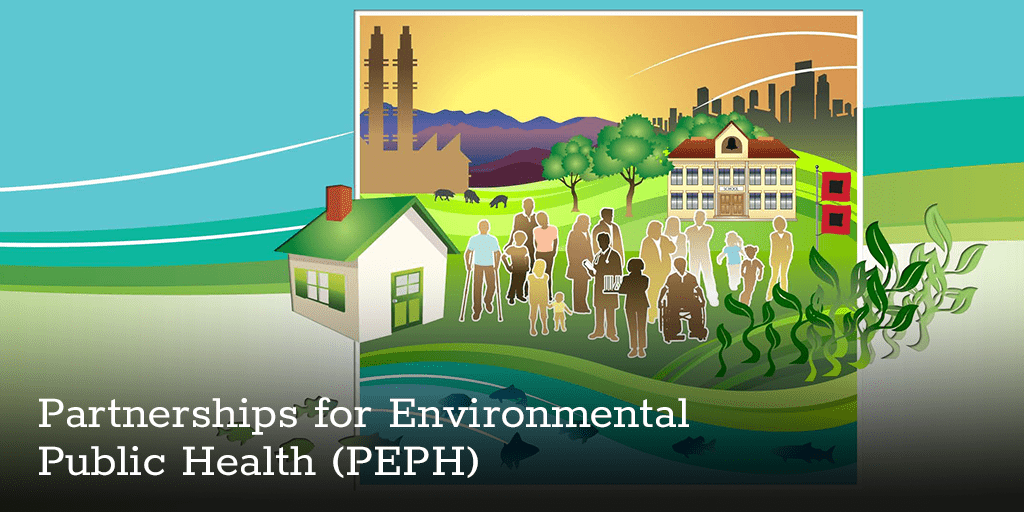A photo of a tree taken by a student participant in the Photovoice study. The photo was categorized as a representation of nature and greenspace. (Photo courtesy of Christine Ekenga)
Although children are highly susceptible to environmental exposures, few studies examine their knowledge and experiences related to environmental health. Researchers and community partners from Emory University’s Rollins School of Public Health, Columbia University’s Mailman School of Public Health, Gateway to the Great Outdoors (a nonprofit that brings science-based learning to children across St. Louis), and the St. Louis Public School District sought to fill this research gap.
Through the project, students in St. Louis public schools used Photovoice, a method of taking pictures and describing them, to demonstrate their knowledge and experiences around environmental health. A 2023 paper describes how the community-academic partnership used the Photovoice results to develop a new theoretical framework that can help promote environmental health for children from low-income urban communities.
Conducting a Photovoice Program
Previous research has shown racial/ethnic and socioeconomic disparities in the city’s natural and built environment. These disparities can negatively affect children’s health and quality of life. In the study, the researchers leveraged their ongoing partnership with St. Louis public schools to examine the environmental experiences of children from low-income households.
At the beginning of the 2020 school year, 20 students aged 10-12 were enrolled in a yearlong program consisting of weekly in-class environmental health lessons and monthly nature-based field trips. To complete the Photovoice activity, students were given cameras and instructed to take photos representing ways the environment affects their health. They took photos over the course of two weeks, then discussed the photos during one-on-one interviews with a researcher. While Photovoice interviews are often conducted in focus groups, the researchers thought the students would provide more candid responses without influence from peers.
“Photovoice is a well-established way to engage community members to share their perspectives on environmental health; however, this is not something that is usually done with children from historically marginalized communities,” reflected Christine C. Ekenga, Ph.D., MPH, assistant professor of environmental health at Emory University and principal investigator of this study. “Our study shows that Photovoice is an effective strategy for determining children’s perceptions about the environment and how it affects them.”
Developing a Framework for Children’s Environmental Health Engagement

A student’s photo of the exhaust pipe from their family’s car. This photo was categorized to represent understanding of climate change because the student associated exhaust with its effects on climate change. (Photo courtesy of Christine Ekenga)
The researchers found five major themes from students’ interview responses:
- Environmental exposures.
- Environmental health outcomes.
- Environmental health sentiments.
- Environmental health solutions.
- Interest in environmental health.
Within each theme, subthemes described more specific categories. For example, when discussing photos of trees or other parts of the natural environment, students described how trees positively influence mental health and provide oxygen, and how planting more trees in the community would improve residents’ well-being. Relevant comments could fall under the environmental exposures, environmental health outcomes, and environmental health solutions themes, and could be further categorized by greenspace, positive perceptions, and community-level solutions. The team developed a framework for children’s environmental health knowledge and experiences based on how the students discussed each of the themes.
“The students’ descriptions of their photos showed us they have a wide breadth of understanding of various aspects of their environment,” said Ekenga. “Categorizing the interviews in this way led us to a deeper understanding of students’ environmental health knowledge and let their perspectives drive the research.”
The framework is also consistent with current literature, which supports the idea that all factors, including community interest, environmental health outcomes, and environmental exposures, influence the effect of an exposure on communities.

The framework developed by the research team. (Figure courtesy of Nadav Sprague, Hannah Zonnevylle, Lexi Jackson Hall, Rosalind Williams, Hannah Dains, Donghai Liang, and Christine Ekenga)
The researchers intend to use the framework in the future to guide how they engage with children in their work in St. Louis. They also plan to use the five categories from the analysis when designing surveys. The research team believes the study demonstrates Photovoice’s utility when conducting community-based participatory research with children. Other teams could conduct similar research in other communities to determine the factors that influence children’s environmental health perceptions in those settings.
Source link
www.niehs.nih.gov


